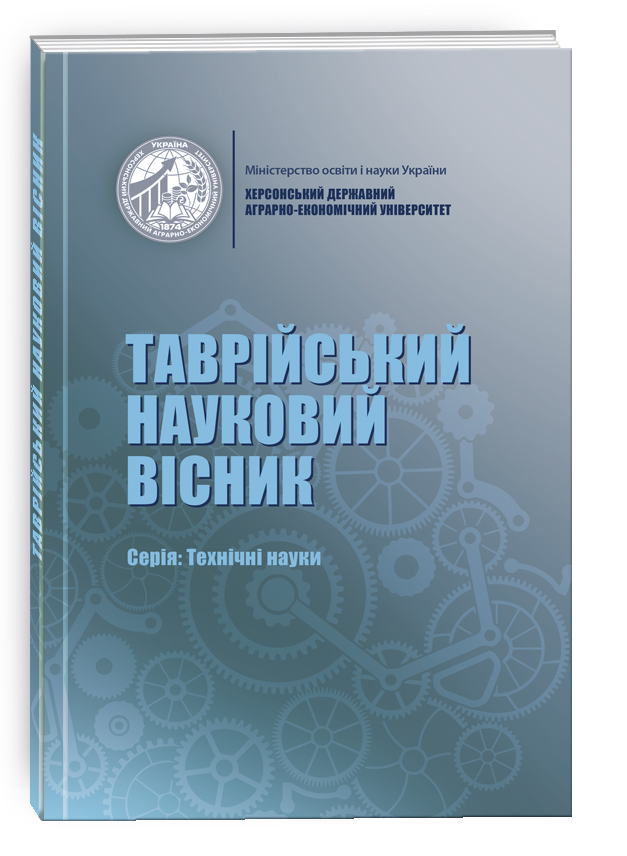CHARACTERISTICS OF THE PROPERTIES OF ALTERNATIVE FUEL CREATED FROM MUNICIPAL WASTE
DOI:
https://doi.org/10.32782/tnv-tech.2025.1.52Keywords:
sewage sludge, fallen leaves, recycling, biofuel pellets, thermal processingAbstract
The article presents the rationale, method of manufacturing and obtaining composite biofuel in the form of pellets based on municipal waste, as well as methods used to determine its main thermal characteristics. Traditional methods of utilizing sewage sludge, which remains for years in sludge landfills, and fallen leaves are inefficient from an economic and environmental point of view or are prohibited. Given the strict environmental standards and high costs of waste processing in Ukraine, their disposal becomes a critical problem due to mass production and large volumes. Utilization of sludge sediments of municipal wastewater treatment plants with their use as a source of thermal energy is one of the promising areas. Adding fallen leaves to the sediments will allow the production of environmentally safe composite biofuels with improved physical and thermal characteristics. The production of granular fuel was carried out using sewage sludge from municipal wastewater treatment plants of the Dnipro-Kirovograd Industrial Complex and fallen maple leaves of the city of Kropyvnytskyi. The main thermal characteristics of composite pellets were experimentally established, namely: density, strength, moisture and ash content. A mixture of sewage sludge and fallen leaves in proportions from 10/90% to 50/50%, respectively, allows obtaining sufficiently high-calorie pellets with a heat of combustion of 18.0 MJ/kg. The resulting composite pellets are environmentally friendly fuel, are low-cost and have sufficiently high thermal characteristics. The use of such alternative biofuels is appropriate for use not only in residential heating systems, but also in industrial plants for the production of thermal and electrical energy in the agro-industrial, municipal and energy sectors.
References
Кравченко В. І. Виготовлення та експериментальна оцінка біопалива на основі осадів стічних вод для одержання теплової енергії та будівельного матеріалу [Електронний ресурс] / В. І. Кравченко // Вісник ХНТУ. Видавничий дім «Гельветика». 2024. 2 (89). С. 32-37. Режим доступу: https://doi.org/10.35546/ kntu2078-4481.2024.2.4
Бабаєв В.М., Панов В.В., Хайло Я.М., Волков В.М., Горох М.П. Альтернативні технологічні рішення проблеми повної утилізації мулового осаду стічних вод/ В.М. Бабаєв, В.В. Панов, Я.М. Хайло, В.М. Волков, М.П. Горох // Комунальне господарство міст. 2018. № 144. С. 32-42.
Syed Shatir A. Syed-Hassan, Yi Wang, Song Hu, Sheng Su, Jun Xiang.
Thermochemical processing of sewage sludge to energy and fuel: Fundamentals, challenges and considerations. https://www.sciencedirect.com/science/article/abs/pii/ S1364032117309036
Д’яконов В.І., Бузіна І.М., Хайнус Д.Д. Екологічні методи утилізації опалого листя та рослинних відходів [Електронний ресурс] / В.І. Д’яконов, І.М. Бузіна, Д.Д. Хайнус// Таврійський науковий вісник. 2020, № 111. C. 258-264. Режим доступу: http://www.tnv-agro.ksauniv.ks.ua/archives/111_2020/37.pdf
Piakovych & Dzurenda (2015) Kharakterystyky horinnia opaloho lystia dekoratyvnykh derev u miskykh ta lisoparkovykh zonakh [Burning characteristics of fallen leaves of ornamental trees in urban and forest park areas] Zhurnal “Bioresursy”, vol. 10(3). Available at: doi: 10.15376/biores.10.3.5563-5572
Закон України «Про схвалення Національної стратегії управління відходами в Україні до 2030 року». [Електронний ресурс]. Режим доступу: https://zakon.rada. gov.ua/laws/show/820-2017-%D1%80#Text
Сайт: Пелети і брикети з опалого листя? [Електронний ресурс]. Режим доступу: https://bio.ukr.bio/ua/articles/10832/
Використання опалого листя у виробництві паливних брикетів. [Електронний ресурс]. Режим доступу: https://repository.kpi.kharkov.ua/items/f092ad7f- 0a31-4eb6-9086-706c7ce8223f
Кравченко В.І., Білоус Ю.В., Кравченко В.П. Створення та обгрунтування композитного палива на основі осаду стічних вод [Електронний ресурс] / В.І. Кравченко, Ю.В. Білоус, В.П. Кравченко //Технічні науки. Херсон: ХДАЕУ. 2023. 3. С. 88-94. Режим доступу: http://journals.ksauniv.ks.ua/index.php/tech/article/ view/403
Longbo Jiang, Jie Liang, Xingzhong Yuan, Hui Li, Changzhu Li, Zhihua Xiao, Huajun Huang, Hou Wang, Guangming Zeng. Co-pelletization of sewage sludge and biomass: The density and hardness of pellet. https://www.sciencedirect.com/science/ article/abs/pii/S0960852414007433?via%3Dihub
Сайт: Європейські стандарти на якість пелет. [Електронний ресурс]. Режим доступу: https://bio.ukr.bio/ua/articles/9243/
Ялечко В.І. Підвищення ефективності енерготехнологічного процесу спалювання здрібненої деревної біомаси: дис….кандата техн. наук: спец. 05.14.06 «Технічна теплофізика та промислова теплоенергетика»/ В.І. Ялечко. Львів: Національний університет «Львівська політехніка». 2021. 149 с.







